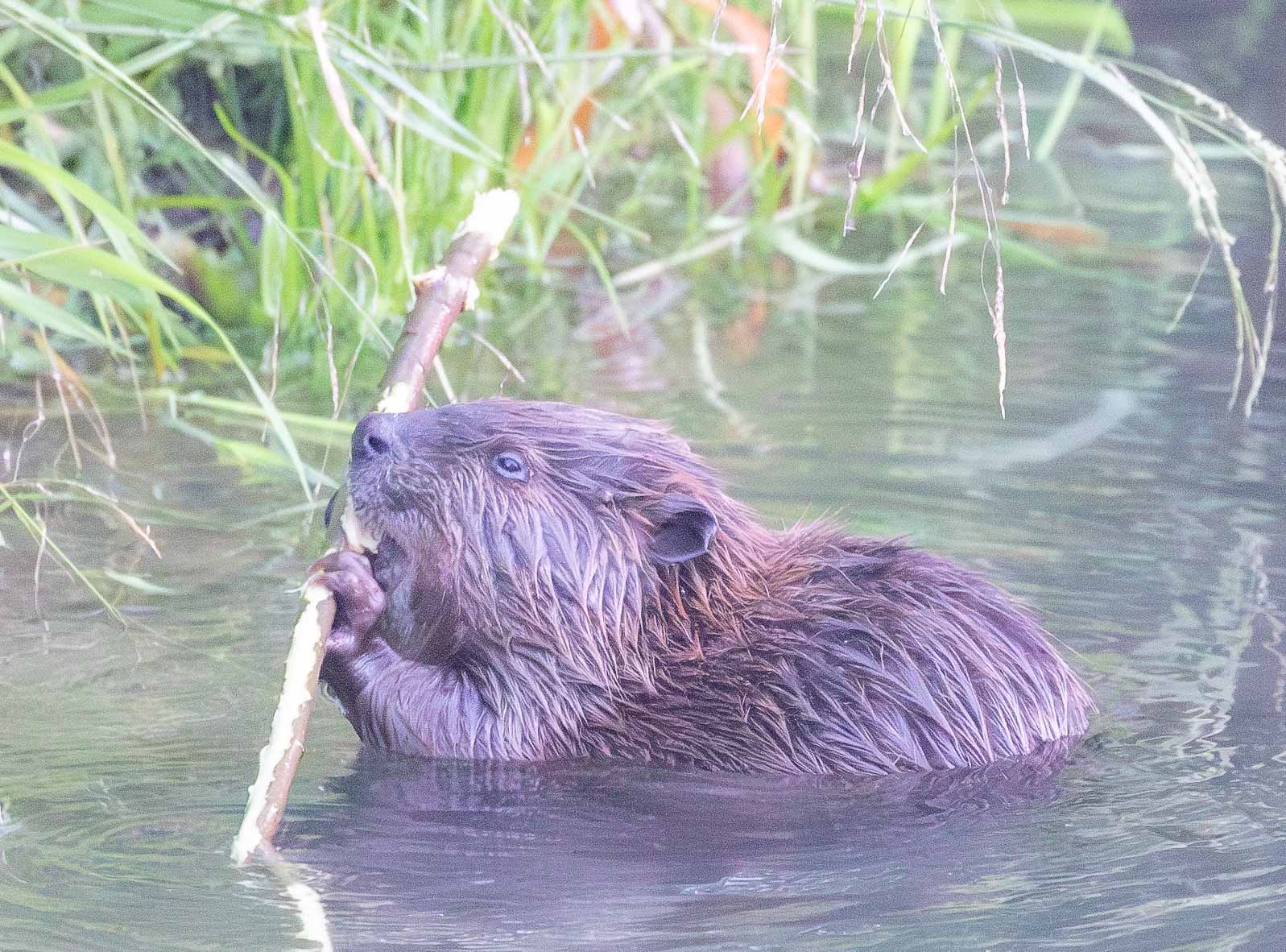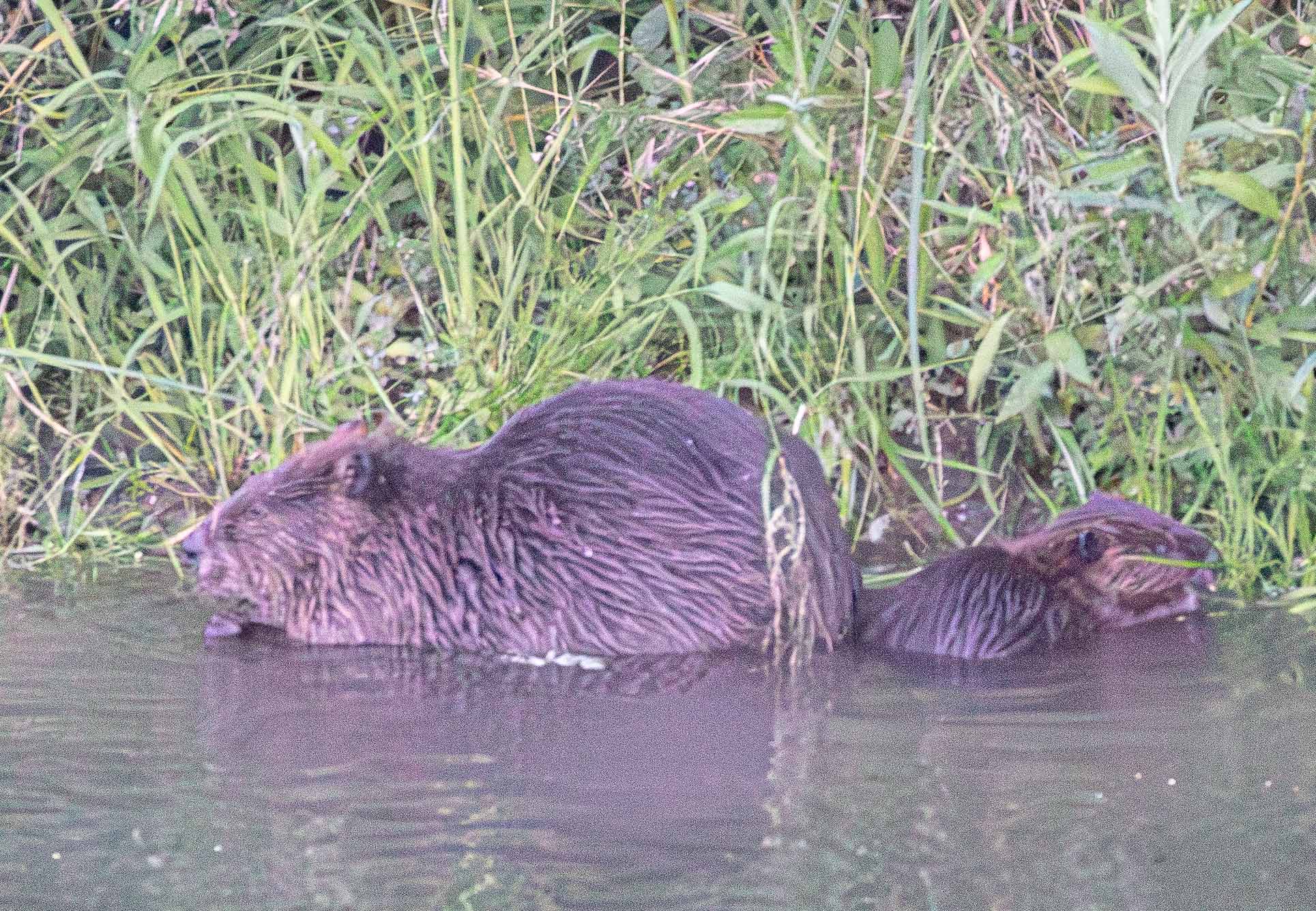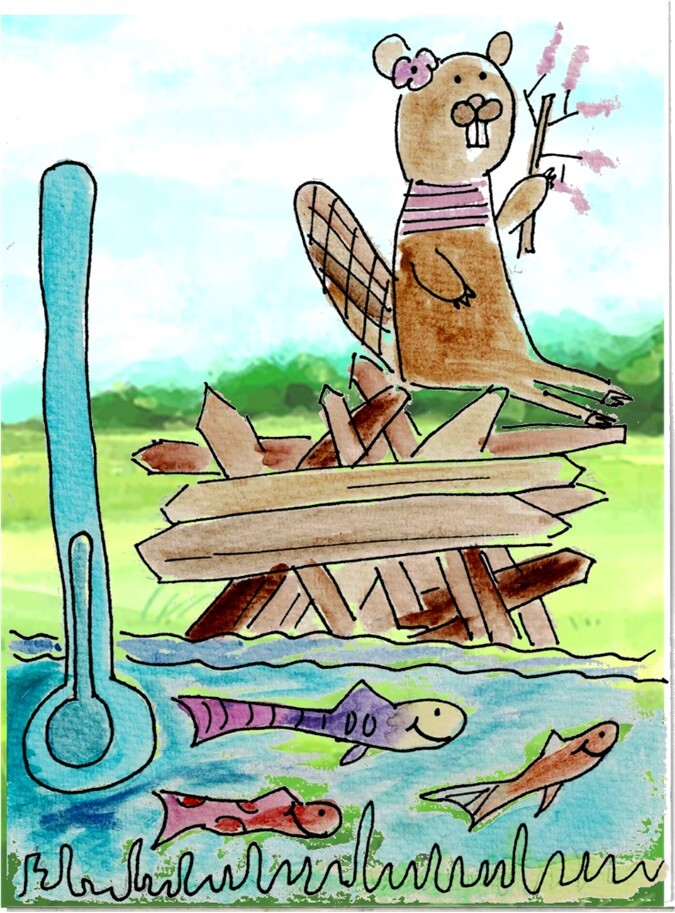Month: July 2024
I was very impressed to read this article. You will be too.
 Beaver Works Oregon plants over 5,000 trees to support beaver habitat in Central Oregon
Beaver Works Oregon plants over 5,000 trees to support beaver habitat in Central Oregon
Beaver Works Oregon, a program of Think Wild dedicated to supporting beaver in Oregon’s high desert, recently planted and fenced off 5,180 willow, cottonwood and assorted riparian plants at both public and private riparian project sites throughout Central Oregon this Spring. The goal is for the plants to establish and provide essential beaver habitat that supports beaver population recovery and associated ecosystem benefits.
Led by Beaver Works Oregon Program Manager Dr. Maureen Thompson, the team recruited, trained and led over ninety volunteers for a collective 800 hours of willow and cottonwood stick harvesting, planting, fencing and monitoring efforts. Planting sites included private land along the Little Deschutes in La Pine, Lake Creek Lodge in Camp Sherman and La Pine and Collier Memorial State Parks. Beaver Works Oregon will continue to monitor the sites through annual visits and will remove the fencing after the plantings have a chance to establish.
Well done! You know what they say, “If you plant it. they will come.”
“Volunteers were integral throughout the process,” said Dr. Thompson. “Willow and cottonwood cuttings were collected and stored in the winter. When spring came, volunteers at the sites trimmed the sticks, drove metal stakes into the ground to plant them along the river, placed cardboard and mud around the plantings to create ideal conditions for growth and put up fencing to protect the plots from disturbances. Trail cameras were also set up to observe wildlife near the sites.”
Beavers are a keystone species, and their activity in stream ecosystems leads to greater biodiversity and increased drought, flood and fire tolerance. For beaver to establish in an area, there need to be plentiful riparian trees, like willow, aspen and cottonwood, for food, shelter and dam-building. Due to various anthropogenic stressors, though, many areas in Central Oregon host to these essential riparian plants have been degraded and are unable to sustain beavers.
You know I’m so old that I remember when the SF waterboard worked with the watershed stewards from Americorps to plant willow and dogwood stakes in Alhambra Creek with the city engineers blessing and the head of public works objected and made city staff pull them all out again.
And then when the riot act was read to them they had to put them back. But UPSIDE DOWN.
Fun times.
By working with landholders to identify project sites and then leading volunteer crews to harvest and plant cuttings of willow and cottonwood trees near rivers and streams, Beaver Works Oregon works to restore the habitat that beavers need to succeed. These community-based activities not only contribute to the restoration of ecosystems crucial for beavers but also provide opportunities for students and adults to “recreate for good,” working, camping and learning about beaver habitat, healthy ecosystems and working lands.
Congratulations on a very successful planting.
Guess what Rusty Cohn photographed in Napa creek yesterday morning? I’ll give you a hint. It’s dam cute.

 Rusty thinks there are two, but so far he is only seeing one at a time. I am so jealous. I miss June and July mornings with kits the worst. But I’m grateful he’s watching and sharing.
Rusty thinks there are two, but so far he is only seeing one at a time. I am so jealous. I miss June and July mornings with kits the worst. But I’m grateful he’s watching and sharing.
Stay tuned.
All of these animals are using the pond, but only one of them is making it.
Gosh that’s rotten. Scientist predict that climate change will alter our wetlands. You know, the things we will need most to absorb all the storms and flooding caused by Climate Change.
Too bad there isn’t some kind of natural solution that can create wetlands where ever it goes for free. But I’m sure if that were possible the scientists would have mentioned it, right?
Climate change will disrupt inland wetlands in North America, study finds
In a new study published in Nature Communications, researchers from Pacific Northwest National Laboratory (PNNL), Lawrence Berkeley National Laboratory, and the University of Michigan focused on improving the simulation of inundated wetlands using a state-of-the-science ESM that includes physical mechanisms of inundation and a range of climate scenarios to project changes and predict factors that can control wetland dynamics.
With the refined model, researchers further found the wetlands over North America will be significantly affected by climate change under future scenarios.
The results reveal projected changes in wetland characteristics over North America from 25° to 53° North under two climate scenarios using a state-of-the-science ESM. At the continental scale, annual wetland area decreases by ~10% (6%–14%) under the high emission scenario, but tiotemporal changes vary, reaching up to ±50%.
Gosh that’s rotten news. So many living things depend on those wetlands. And they are going to be in even worse shape with Climate Change.
As the dominant driver of these changes shifts from precipitation to temperature in the higher emission scenario, wetlands undergo substantial drying during the summer season when biotic processes peak. The projected disruptions to wetland seasonality cycles imply further impacts on biodiversity in major wetland habitats of the upper Mississippi, Southeast Canada, and the Everglades.
Furthermore, wetlands are projected to significantly shrink in cold regions due to increased infiltration as warmer temperatures reduce soil ice. The large dependence of the projections on climate change scenarios underscores the importance of emission mitigation to sustaining wetland ecosystems in the future.
Wow. Bad news for hot AND cold regions. If there were only some kind of helper that could create cooler pond temperatures and microclimates.








































